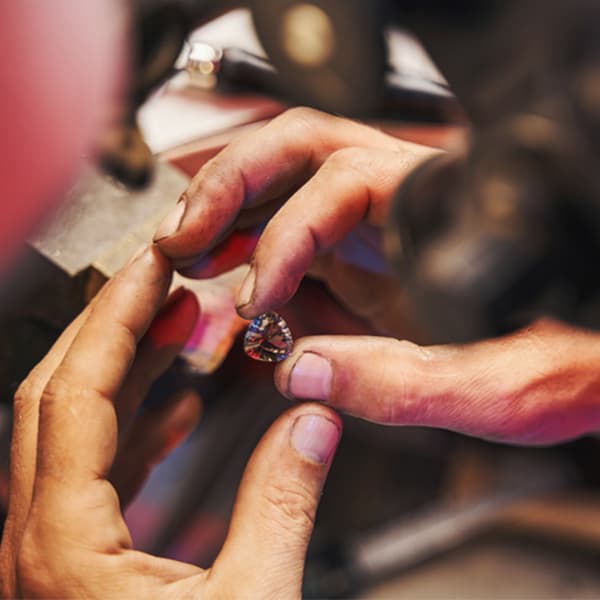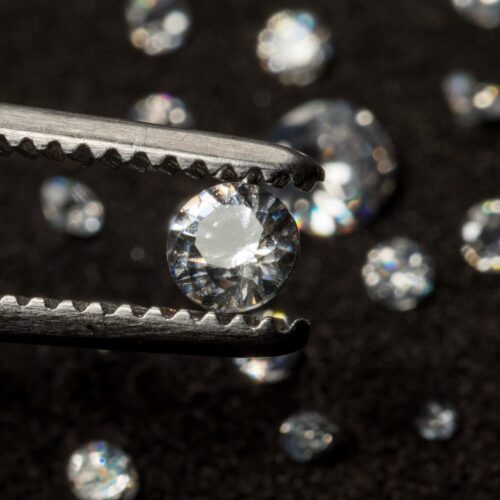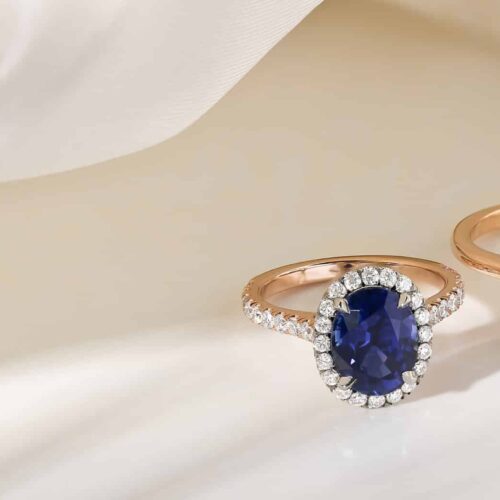Diamonds have captivated humans since we first discovered them. The glittering, solid and incredibly rare rocks have become commonplace in jewellery and the ultimate declaration of love. But while we always assume that a naturally mined diamond is the superior choice, there is growing support for lab-made diamonds to become the norm.
Growing diamonds in a lab is a process that has been around for about 150 years, but it has started to gain popularity in recent years. The technology to create diamonds in a lab has become more accessible, meaning that more people can take advantage of this innovative process.


How are diamonds made in a lab?
There are two main processes for growing a diamond in a lab. The first uses a “seed” of a diamond which is then subject to high pressure while surrounded by pure graphite carbon. This system of high-pressure high temperature replicates the conditions needed to create a natural diamond. The seed is heated to temperatures of around 1,500C and then pressurised to around 1.5 million pounds per square inch.
Another popular process for creating diamonds in a lab is known as chemical vapour deposition (CVD). This involves placing the diamond seed in a sealed chamber filled with a carbon-rich gas and then heating the gas to around 800C. This causes the gases to stick to the seed, building up a diamond in the process.
The benefits of a lab-made diamond
There are many benefits to choosing a lab-made diamond over a natural diamond. Here are just some of the reasons to consider a lab-made diamond for jewellery, including engagement rings.
- Lab-grown diamonds are cheaper than the mined alternatives, simply because fewer resources are needed to grow a diamond than to dig one out of the earth. Mined diamonds are rare, which means that mining doesn’t always yield results. This means that investment in resources is required, even if no diamonds are found. Contrast this with lab-grown diamonds where the results are guaranteed.
- In terms of the physical qualities of a lab-grown diamonds, they are virtually indistinguishable from their mined counterparts. A jeweller looking at a diamond in a loupe would not be able to identify if it is natural or man-made. Lab-made diamonds have excellent qualities and it’s possible to have more control over the finished results including the colour and any inclusions.
- Environmentally-friendly. It is far more environmentally friendly to make a diamond than to dig one out of the ground. Diesel fuels, electricity and hydrocarbons are all released in the process, which has a considerable impact on the environment. The process of creating diamonds in a lab is far less damaging to the environment.
- Alongside the environmental impact of mining diamonds, there is also the ethical side of the trade. Diamond mining is an industry plagued by human rights issues, so removing the need for individuals to be involved in the process can only be beneficial. There is also the issue of the diamond trade being used to fund conflict. While it is possible to source so-called “conflict-free” diamonds, a simpler solution would be to turn to lab-grown diamonds as an alternative.
- With a lab-grown diamond, you have additional flexibility to determine what goes into the diamond. Ashes placed in diamonds are an increasingly popular choice for those who are grieving. While this might produce an inferior diamond to a typical lab made diamond, it can bring a lot of comfort to those who are grieving.
- Coloured diamonds are incredibly expensive, but the lab process makes it possible to create diamonds in all colours at a fraction of the cost. They are also brighter, steady in colour and more brilliant than mined diamonds.
- Fewer impurities. Lab-grown diamonds can be of higher quality than mined diamonds because the production process is so controlled. Mined diamonds contain impurities from dirt and stones that are present when the diamond is formed. Lab-made diamonds are free from these inclusions, which allow them to offer more dazzle and sparkle.
Disadvantages of lab-made diamonds
Perhaps the obvious disadvantage of a lab-made diamond, and of the entire process of creating diamonds in a lab, is that the results aren’t as rare as a mined diamond. Scarcity is what gives diamonds their high price and value, so the idea that we can simply make as many diamonds as we want means that they are no longer a scarce product.
Some people like the idea that a diamond has been formed over millions of years, and that it has been plucked from the ground and carefully shaped into a special gem. The romantics may always prefer a mined diamond for engagement rings because they symbolise scarcity and rarity, but those who are looking for a cost-effective and beautiful alternative may turn to lab-grown diamonds in the future.


















